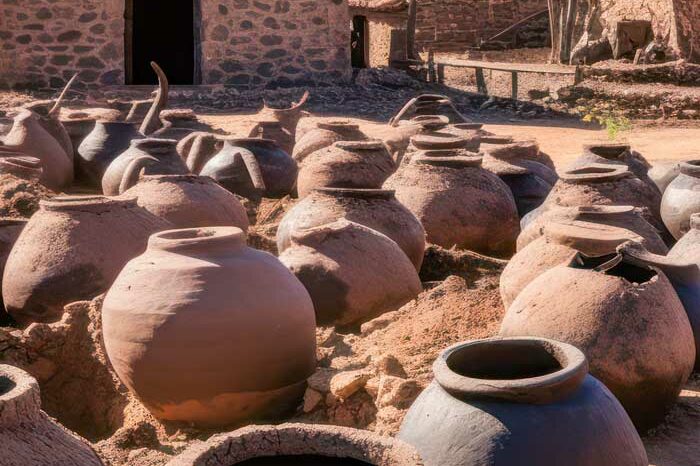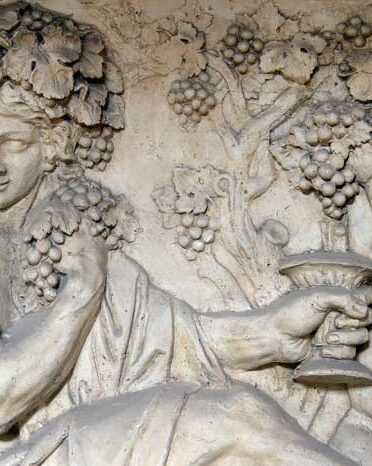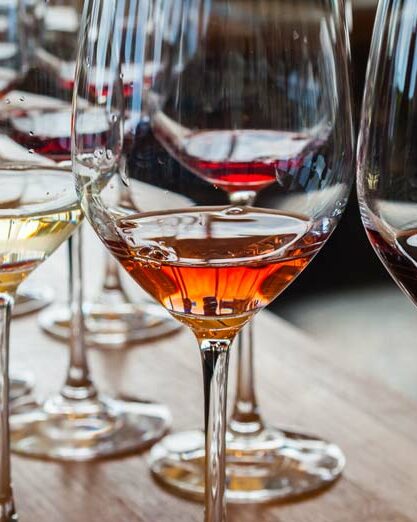The romantic history of wine
“Where there is no wine, there is no love.” – Euripides
During the season of Valentine’s Day, what better time could there be to explore the shared history of wine and love? Whether you intend to share the gift of wine with someone special this year or are simply a lover of this most passionate drink, let’s dive together into the long-established partnership between romance and wine.

Georgia: Love at first taste
It’s been said that Georgia is a small country with a big heart. And so, it’s only fitting that our romantic trip through the history of wine should begin there nearly 8000 years ago. Scientists think the earliest instances of viticulture must have happened in the region completely by accident, after people discovered that grape juice transformed into something else when it was buried through winter in a shallow pit.
Whether two pre-historic lovers shared this primordial drink, we’ll never know. But we like to think they did. To this day, Georgia continues with its great lineage of winemaking by using traditional Kvevri clay pots, now declared an Intangible Cultural Heritage by UNESCO.
Dionysianlove
Greek history, literature, art and drama is inextricably linked with wine. It is the favoured drink of the god, Dionysus, patron of fertility, ritual madness, religious ecstasy, theatre – and you guessed it – wine.
The ancient Greeks believed that wine could create euphoria and allow for love to blossom.

Venus tears
In Roman days, the association between love and wine intensified even further. Wine was called “Venus Tears” after the Roman goddess of love, beauty and desire. Wine also had a central role in Roman marriages; in which the bride and groom drank from a ceremonial goblet to symbolise their new union.
Romans kept their best wines for romantic occasions, too. Falerian wine; pressed from Aglianico grapes that grew on the verdant slopes of Mount Falernus, was a white wine known for its strong taste and high alcohol content.
WINE FACT:
The ancient Greeks flavored their wine with herbs, spices, seawater, and even lead!

Renaissance art
After the Middle Ages, Europe rediscovered its classical roots again, and wine once more took on a significant role in the intellectual ferment that was the Renaissance. Wine helped lengthy discussions flow on great ideas that churned in the minds of people like Michelangelo and Da Vinci. But it was not limited to the creative elite.
Along with an interchange of ideas in continental Europe came a new movement in wines too. Greeks, French and Italians enjoyed each other’s vintage along with ideas and culture. Special vintages were saved and served at occasions like weddings, betrothals, and other romantic milestones.
Honeymoon
As Rome fell, wine became embedded in rituals of courtship among the emerging nobility. Newlyweds were often given specially spiced and honeyed wines to drink for one moon cycle after their wedding, to encourage romance and fertility. This wine was actually mead, made from fermented honey, hence the name honeymoon.
WINE FACT:
Unscrupulous Roman merchants would dilute wine with water or add color to white wines to make them appear red. Modern wine counterfeiting remains a problem to this day, which is why we only work with the best suppliers for our events.

Modern romance
Reacting strongly to the Industrial Revolution, a group of poets and artists started a movement called Romanticism; all about passion, individuality, and glorification of nature and past. Romantic poems, plays and novels used wine as a metaphor for desire and the dizzy euphoria of new love.
Beloved of Lord Byron and Alexander Dumas, French clarets became trendy, allowing love birds to fly away into the past and dwell in more poetic, idyllic times.
Conclusion
Clearly, wines have long been central to the human story of passion, love and beauty. They have sparked brilliant ideas, begun passionate and lifelong relationships, and brought people together all across the globe. So, this Valentine’s Day, let’s raise a glass to love. Santé!